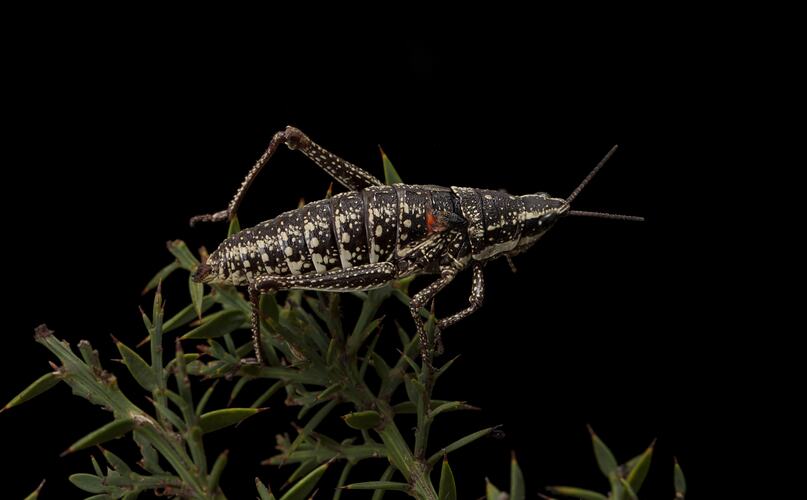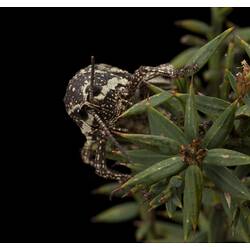General Description
A large, flightless grasshopper. Antennae stout and forward-pointing. Wings reduced to small, veined bracts which may be bright red or orange. Body colour and patterning varies geographically. Typical background colour is dark purple or olive-brown, overlaid with a dense scattering of sharply defined yellow or cream spots and pustules which may be arranged in vague stripes. Sides of head and thorax bear a contiguous broad pale stripe, which may continue along the length of the hind legs. Knees of hind legs may be greenish or purplish. Juveniles (nymphs) resemble adults but are smaller. Females are twice as long as males, and have a body-length to 4 cm.
Biology
These grasshoppers make their own anti-freeze and are very cold-tolerant. Nevertheless, they seek warm microclimates, such as sunny rocks and bare ground, in which to bask and mate. They can't fly and are not strong hoppers, so cannot readily flee from predators. However, their bright colours serve as a warning that their skins contains noxious chemicals - skinks will avoid them after a single encounter. They may derive these chemicals from their main food - the aromatic foliage of mint-bush (Prostanthera species).
Distribution
South-eastern Australia.
Habitat
Open and shrubby areas, especially but not exclusively at higher altitude.
More Information
-
Animal Type
-
Animal SubType
-
Brief Id
Large, flightless, wing-bracts often red, body dark purple or brown overlaid with pale spots, sides of head and thorax with pale stripe, body-length to 4 cm.
-
Colours
Black, Brown, Purple, Yellow, Red
-
Maximum Size
4 cm
-
Diet
Herbivore
-
Hazards
Warning colours and sluggish behaviour suggest that this species would be toxic if eaten.
-
Endemicity
-
Commercial
No
-
Conservation Statuses
CITES: Not listed, FFG Threatened List: Not listed, EPBC Act 1999: Not listed, IUCN Red List: Not listed
-
Taxon Name
-
Scientific Author
(Walker, 1871)
-
Common Name
Spotted Mountain-grasshopper
-
Other Names
Southern Pyrgomorph Grasshopper
-
Kingdom
-
Phylum
-
Subphylum
-
Class
-
Order
-
Suborder
-
Superfamily
-
Family
-
Subfamily
-
Genus
-
Species Name
concinna




